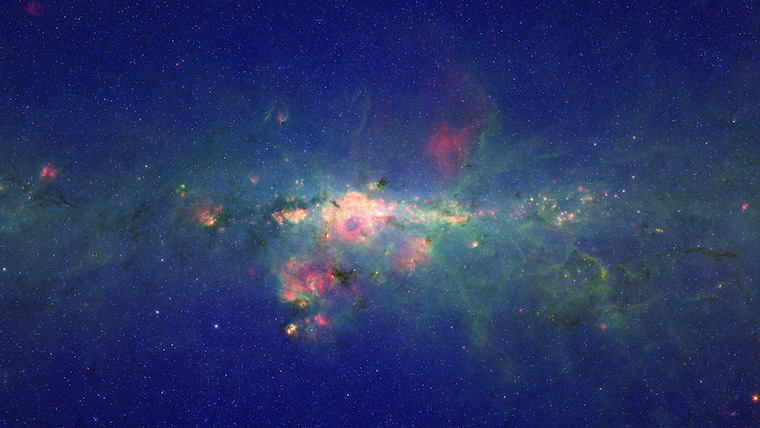Peony Star

Generally considered to be the second brightest star in the Milky Way after Eta Carinae, Peony (nebula) star, or WR 102ka is another massive star Wolf-Rayet star with a mass of ~100 M☉. In fact, the Peony star falls within a specific sub-classification of WR stars called slash stars. Wolf-Rayet stars are characteristically devoid of hydrogen lines in their spectra, but certain WR candidates like the Peony star exhibit weak hydrogen emission or even absorption lines. These slash stars straddle the boundary between Wolf Rayet and class O supergiant stars.1 2
The mass and luminosity estimates of several big Wolf-Rayet stars like Eta Carinae, Peony star and the Pistol star are difficult to determine accurately because of interstellar extinction, namely the absorption and scattering of electromagnetic radiation by the galactic dust and gas between these stars and Earth. On top of that, these WR stars are typically shrouded in nebulas called Wolf-Rayet bubbles due to their strong stellar wind and the resultant expulsion of matter from the stars themselves. Consequently, these rankings of mass and luminosities are tentative best estimates and are subject to change with better estimation techniques or better resolution of our telescopes as technology improves. But one thing is certain - all of these massive stars are expected to detonate in spectacular supernovas or hypernovas in the near (astronomical) future - in a few million years. 3
Further Reading
Footnotes
-
Of/WN, or “slash ‘/’” stars have spectroscopic properties of both O and low-ionization WN spectral classes. ↩︎
-
Crowther, Paul A.; Walborn, Nolan R. (2011). “Spectral classification of O2-3.5 If*/WN5-7 stars”. Monthly Notices of the Royal Astronomical Society [link] ↩︎
-
Eta Carinae’s epic supernova explosion comes to life in new visualization - Space.com [link] ↩︎